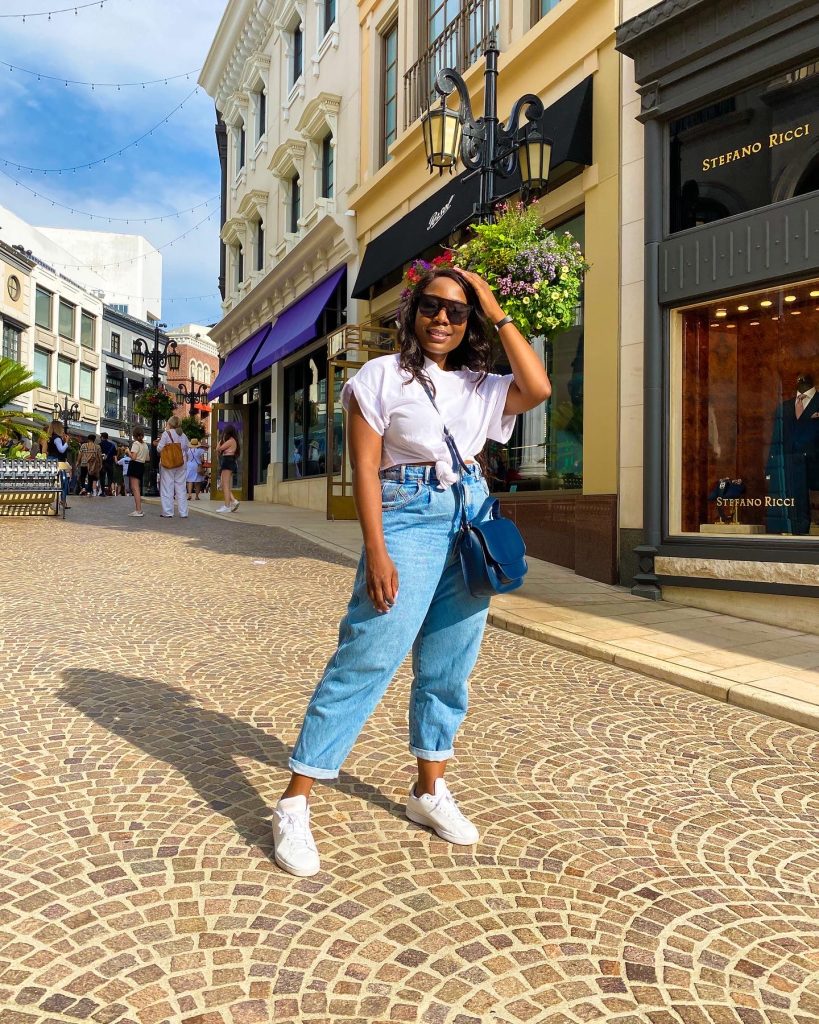*Disclosure: This post may contain affiliate links, which means that I get a small commission if you decide to make a purchase through the links, at no cost to you.
1.Choose the right fabric
The fabric of your clothing plays a crucial role in keeping you comfortable on a day hike. In the summer, it’s important to choose lightweight and breathable fabrics that allow sweat to evaporate quickly. Fabrics like nylon, polyester, and spandex are a good idea for hiking because they are lightweight, quick-drying, and durable.
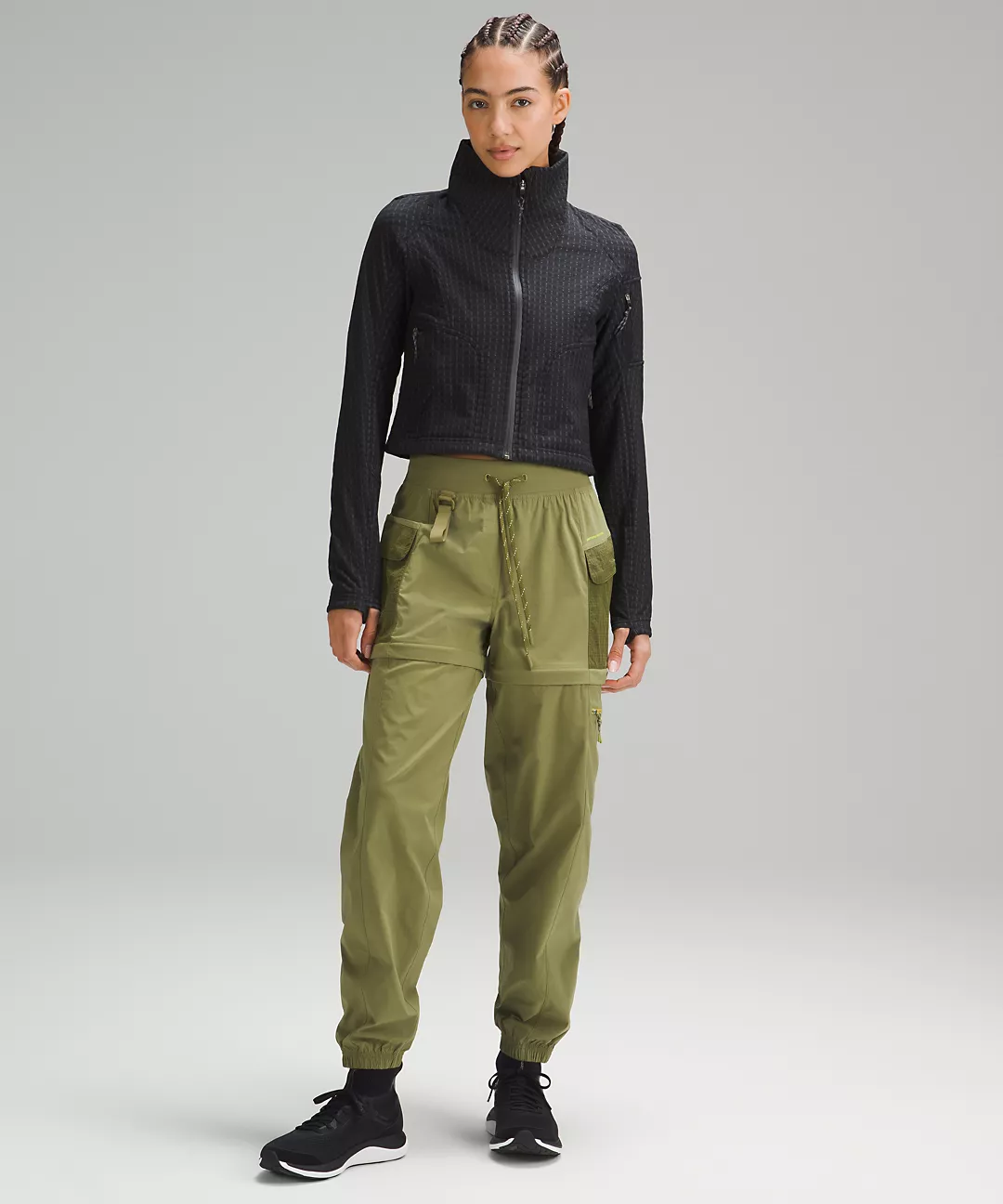
Get the look HERE
Cotton is not recommended for hiking in the summer because it absorbs sweat and retains moisture, making you feel damp and uncomfortable. Instead, look for clothing made from moisture-wicking fabrics that draw sweat away from your skin and keep you dry.
2.Lightweight and breathable clothing
When it comes to hiking in the summer, lightweight and breathable clothing is a must. Choose clothing made from a moisture-wicking fabric that will keep you cool and dry, even when you’re sweating. Avoid cotton clothing as it tends to retain moisture and can lead to chafing and discomfort.
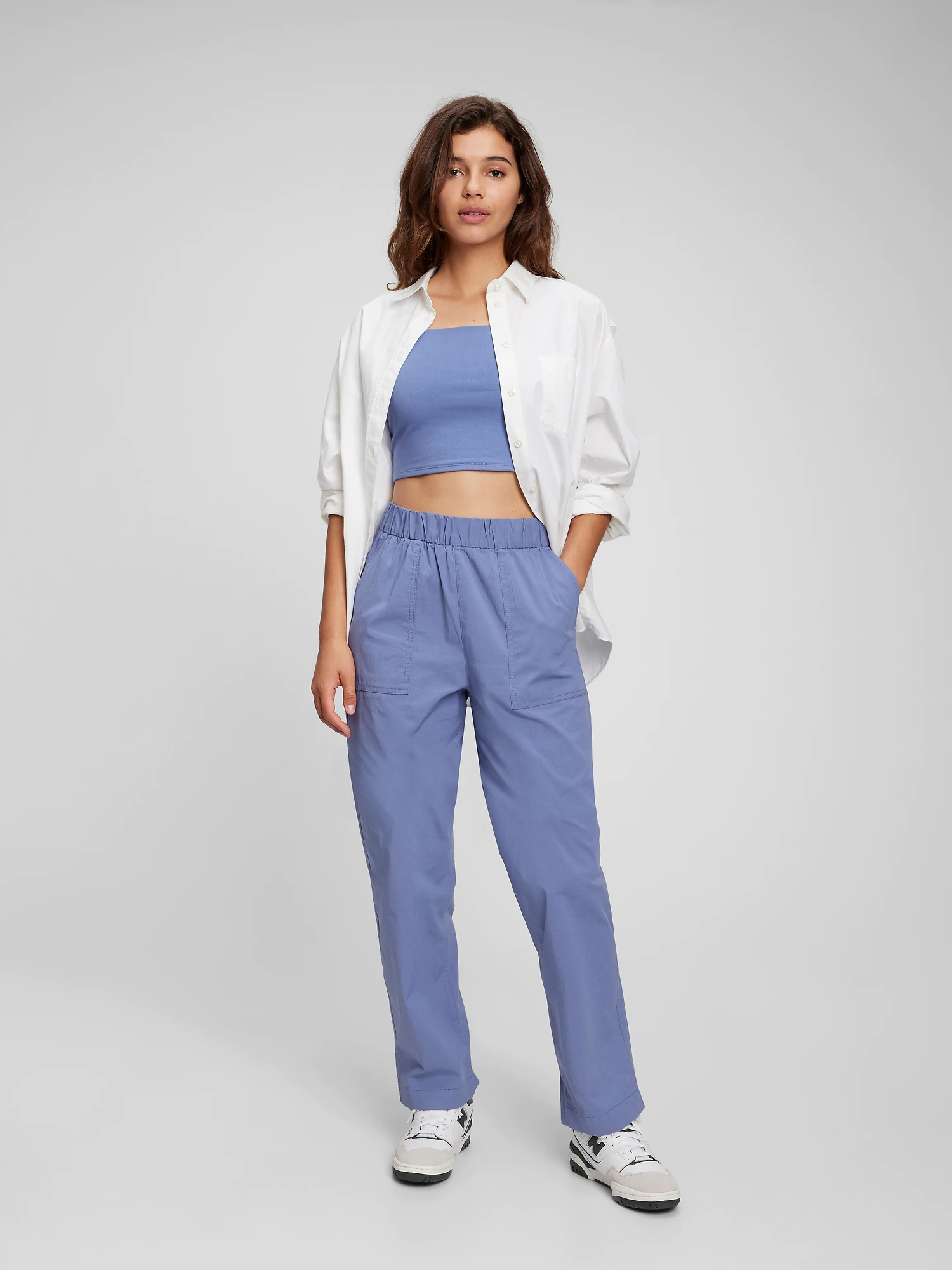
Get the look HERE
Instead, look for synthetic fabrics like polyester or nylon, or natural materials like merino wool or bamboo. These fabrics are lightweight, breathable, and quick-drying, making them ideal for summer hiking. You can also look for clothing with mesh panels or ventilation to promote airflow and keep you cool.
3.Choose the right footwear
Choosing the right footwear is crucial when summer hiking. Your footwear should provide support, traction, and protection from the elements. Hiking boots are a popular choice because they offer ankle support and protection from rocks and debris.
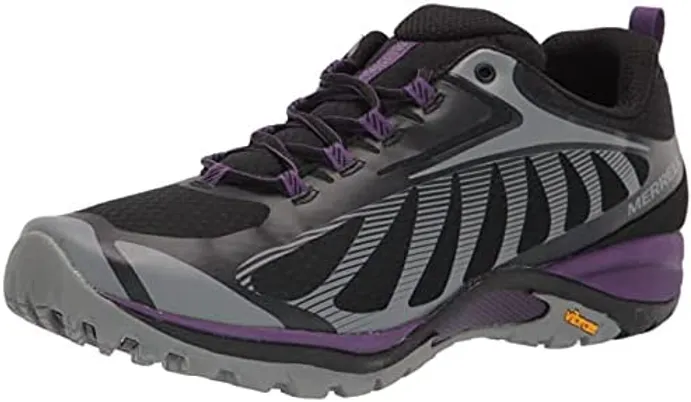 Get the look HERE
Get the look HERE
If you prefer something lighter for the warm weather, trail running shoes or hiking shoes are also great options. Look for shoes with breathable mesh panels to allow air to circulate around your feet and prevent overheating. Sandals are not recommended for hiking, unless you are not going for longer hikes, because they don’t provide enough support or protection for your feet.
Your choice of footwear can make or break your hiking experience. In the summer, it’s important to choose footwear that is comfortable, breathable, and supportive. Look for hiking shoes or boots with good traction and support for your feet and ankles.
Choose shoes made from breathable materials, like mesh or nylon, to keep your feet cool and dry on long hikes. You can also consider wearing hiking sandals if you’re hiking in a hot and dry climate. Hiking sandals offer good traction and ventilation, but make sure to choose a pair with a sturdy sole and straps that will keep your feet secure.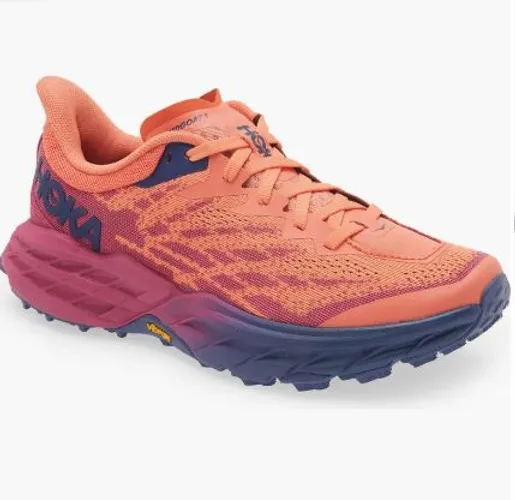
Get the look HERE
4.Protect your head and eyes
When hiking in the summer, it’s important to protect your head and eyes from the sun. A wide-brimmed sun hat can provide shade and protect your face, neck, and ears from the sun’s rays. Look for a wide-brimmed hat made from a lightweight, breathable fabric like nylon or polyester.
Sunglasses are also important for protecting your eyes from the sun’s harmful UV rays. Sunglasses with polarized lenses that reduce glare and enhance visibility on the trail are a good option.
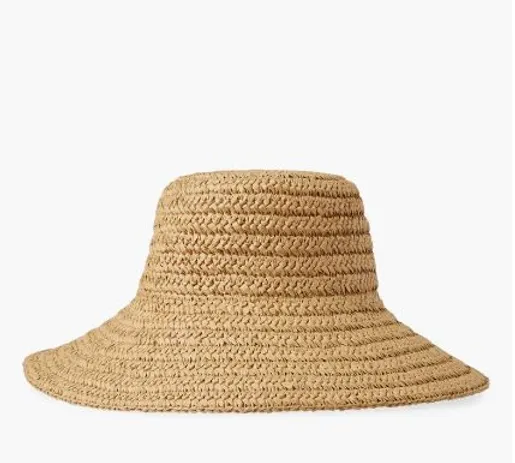
Get the look HERE
5.Use sunscreen and bug spray
Sun protection is essential when hiking in the summer. The sun’s rays can be intense, and prolonged exposure can lead to sunburn, skin damage, and even skin cancer. To protect yourself from the sun, wear a hat with a brim to shade your face and neck. A wide-brimmed hat is ideal as it provides more coverage than a baseball cap.
Sunscreen and bug spray are essential items to bring on a summer hiking trip. Sunscreen will protect your skin from the sun’s harmful UV rays, while bug spray will keep mosquitoes and other insects at bay.

Get the look HERE
Choose a sunscreen with an SPF of at least 30 and apply it to all exposed skin before heading out on the trail. Reapply every two hours or as directed on the label. Look for a bug spray containing DEET or picaridin for maximum protection against mosquitoes and ticks on hot days.
You should also wear sunglasses to protect your eyes from UV rays. Look for sunglasses with polarized lenses, as they reduce glare and provide better clarity. Don’t forget to apply sunscreen to any exposed skin, even on cloudy days. Choose a broad-spectrum sunscreen with an SPF of at least 30 and reapply every two hours or after swimming or sweating.
6.Bring a rain jacket
Even if the forecast calls for clear skies, it’s always a good idea to bring a rain jacket on a summer hike. Summer storms can pop up unexpectedly, and a rain jacket will keep you dry and comfortable on the trail.
Look for a lightweight and breathable rain jacket that can be easily packed into your backpack. Some rain jackets even have vents or mesh panels to increase airflow and prevent overheating.
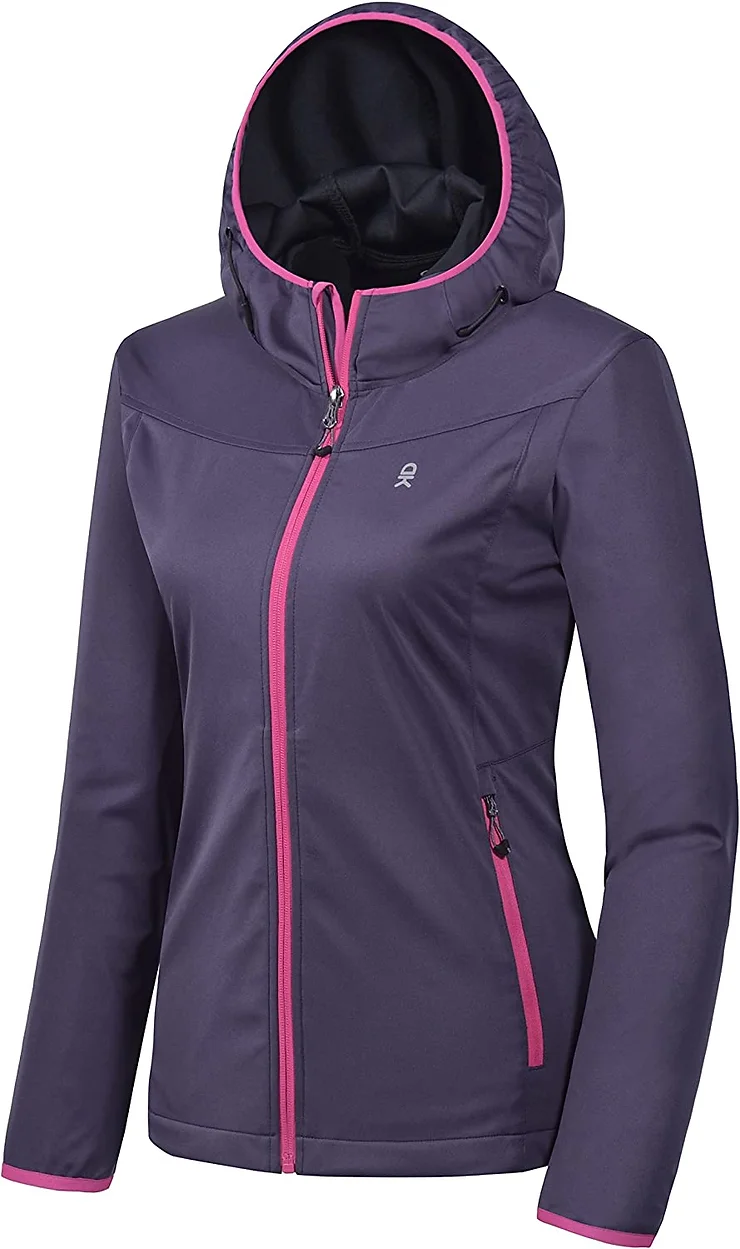
Get the look HERE
Even if the forecast calls for sunny weather, it’s always a good idea to bring a lightweight rain jacket on your hike. Summer storms can pop up unexpectedly this time of year, and a rain jacket can provide protection from the rain and wind.
A jacket made from waterproof and breathable material, like Gore-Tex or eVent is a great option. A lightweight rain jacket can also double as a windbreaker, providing an extra layer of protection from the elements.
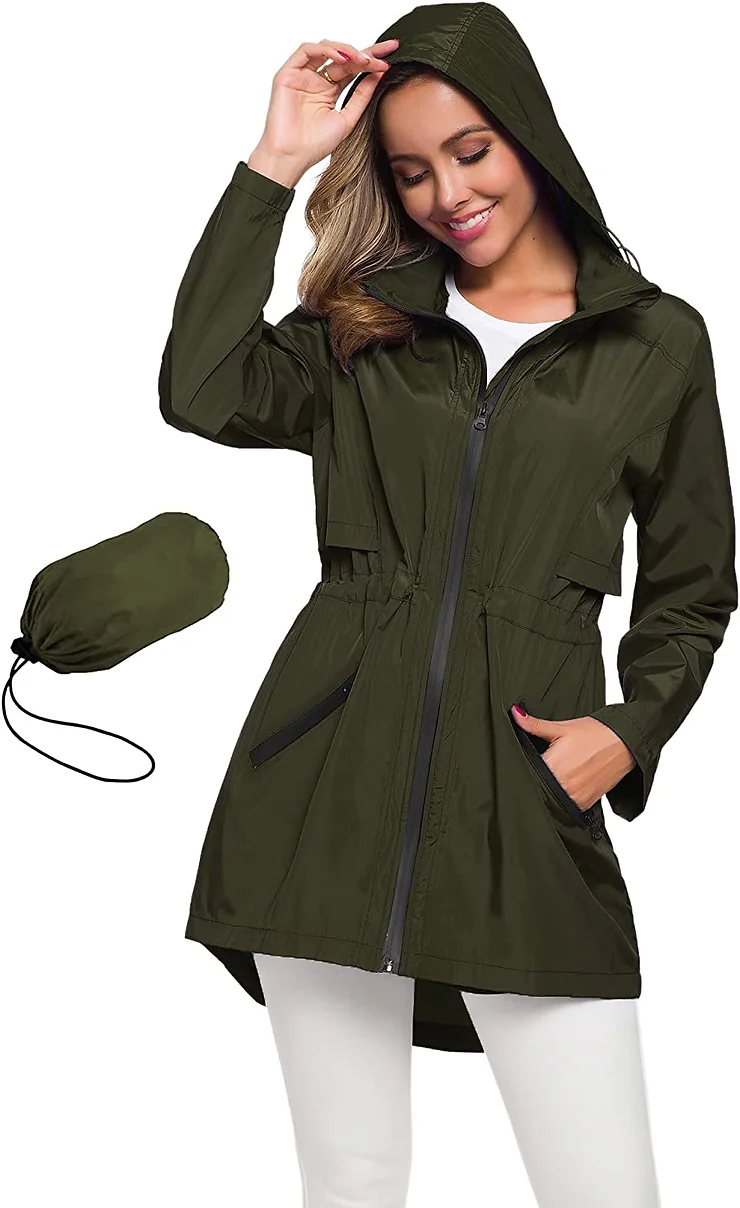
Get the look HERE
7.Pack a backpack
Finally, it’s important to bring a backpack on your hike to carry all of your essentials. Look for a backpack with a comfortable and adjustable harness system that distributes the weight evenly across your back and shoulders. A backpack with multiple compartments is my personal preference as it helps me stay organized and easily access my gear and snacks.
Make sure to pack plenty of water to stay hydrated on the trail in the summer heat. The general rule of thumb is to bring at least 2 liters of water per person for a half-day hike, and more for longer hikes or hot weather. You want to maintain your body temperature as much as possible.
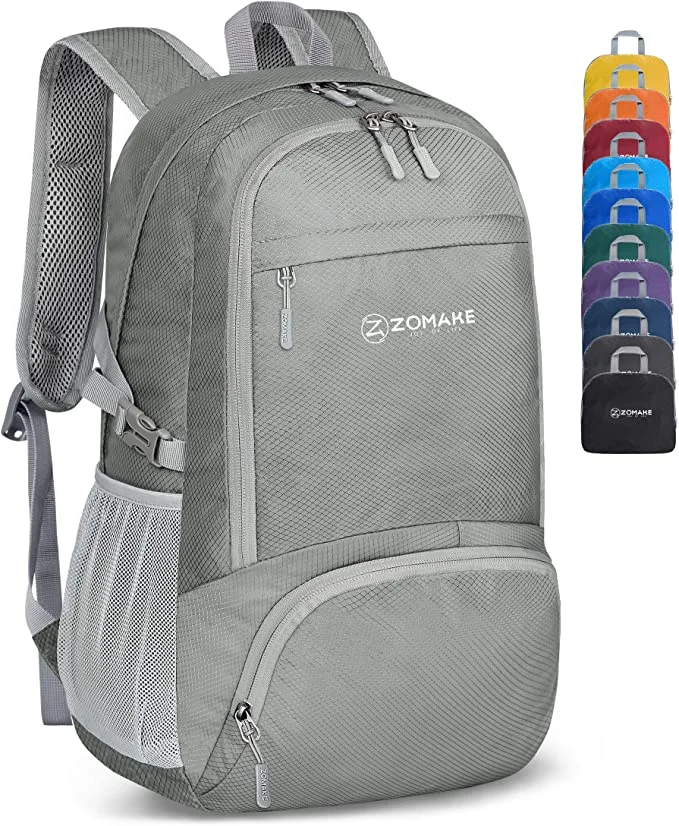 Get the look HERE
Get the look HERE
In addition to a water bottle, pack high-energy snacks like trail mix, energy bars, and fruit to keep your energy levels up on the trail. You can also bring a lightweight, portable stove and fuel to make hot meals or drinks if you’re planning a longer hike.
When choosing a backpack, consider the size and weight of the pack. You don’t want to be carrying unnecessary extra weight, but you also don’t want to be without essential gear. Choose a backpack that is the right size for your needs, and make sure it fits comfortably and securely.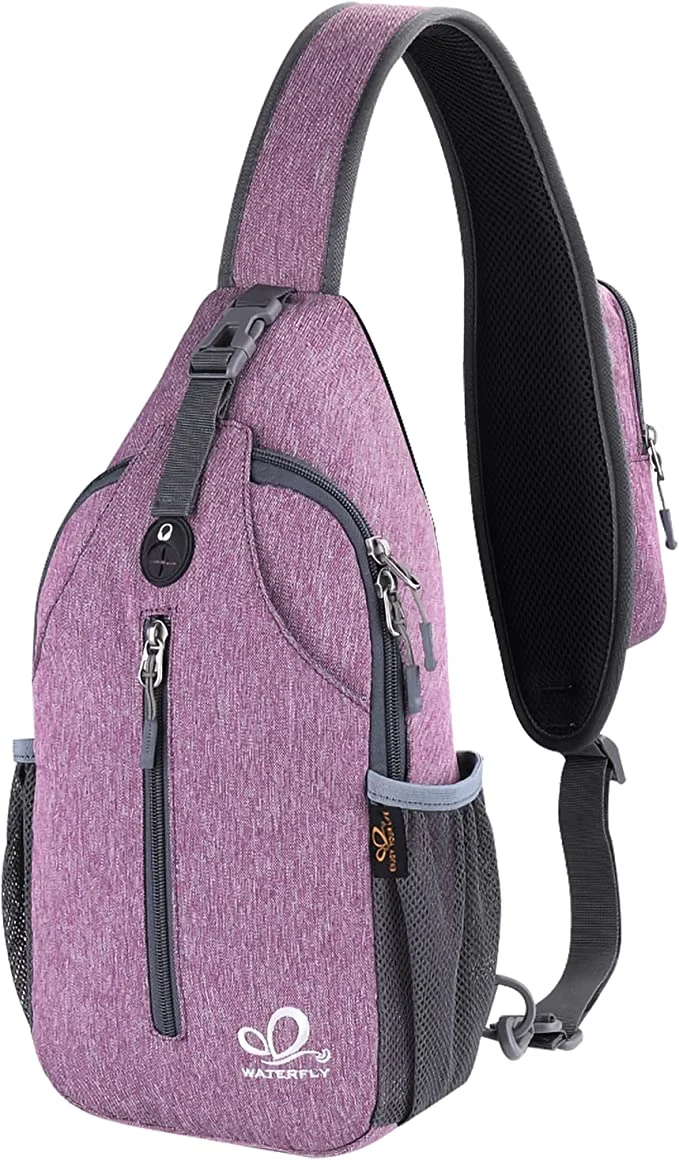
Get the look HERE
Other essential items to pack in your backpack include a map and compass, a first-aid kit, a headlamp or flashlight, and a whistle. It’s also a good idea to bring a small towel or bandana to wipe sweat from your face and a plastic bag to pack out any trash.
8.Quick-drying socks
Socks are an often-overlooked part of a hiking outfit, but they are essential for keeping your feet dry and comfortable. Look for socks made from synthetic materials, like polyester or nylon, that are quick-drying and moisture-wicking. Avoid cotton socks, as they tend to retain moisture and can lead to blisters and discomfort.
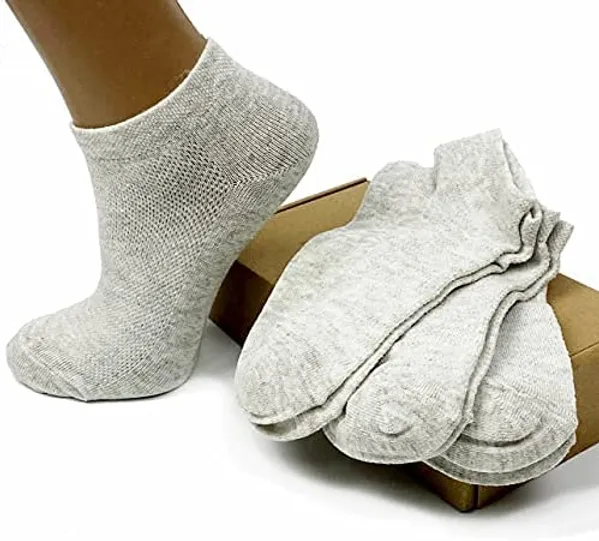
Get the look HERE
You can also consider wearing liner socks underneath your hiking socks. Liner socks help reduce friction and wick moisture away from your skin, keeping your feet dry and blister-free.
9.Layering options
While the summer months can be hot, temperatures can still fluctuate throughout the day. It’s important to have layering options that you can add or remove as needed. Look for lightweight and versatile layers, like a long-sleeved shirt or a fleece jacket. Your base layer could include sports bras and a tank top. A thin shirt with long sleeves can be paired with cargo shorts to complete your look.
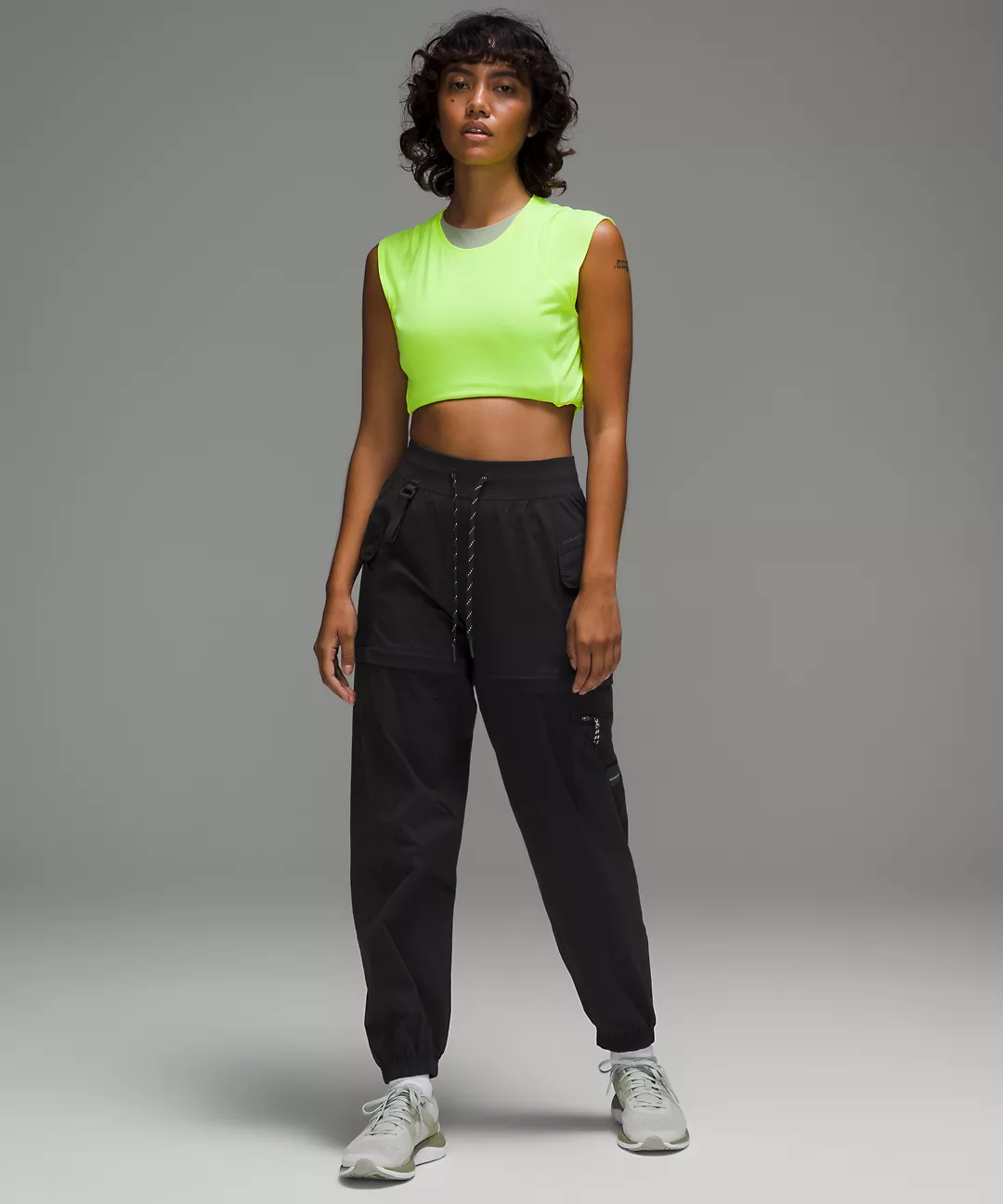
Get the look HERE
When choosing layers, consider the weather conditions and your activity level. If you’re hiking in a cooler climate or at a high elevation, you may need more layers to stay warm. A pair of long pants and a long-sleeved shirt are a good choice for these weather conditions. On the other hand, if you’re hiking in a hot and humid climate, you may want to opt for lighter layers that can be easily removed.
11. Hydration system
Staying hydrated is crucial when hiking in the summer. Bring a hydration system, like a hydration bladder or water bottle, to ensure you have access to clean drinking water throughout your hike.
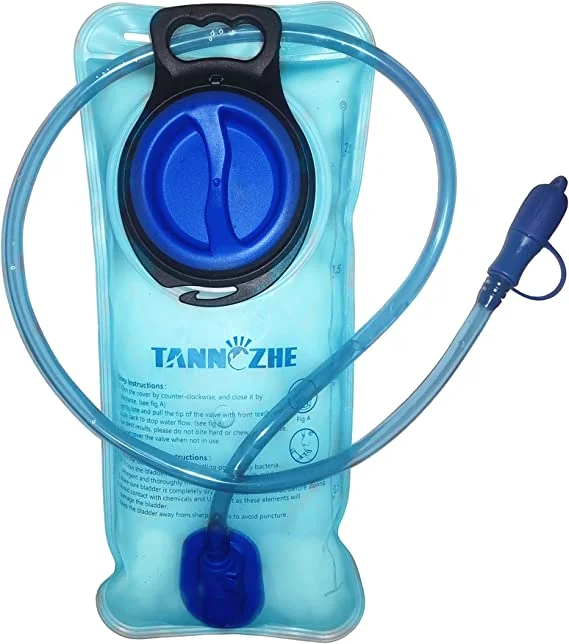
Get it HERE
A hydration bladder is a popular option for hikers as it allows you to carry a large amount of water and drink hands-free through a tube. If you prefer a water bottle, choose a lightweight and durable option that is easy to carry.
12. Optional accessories
There are a few optional accessories that you may want to consider when hiking in the summer. A lightweight and compact hiking umbrella can provide shade and protection from the sun on hot and sunny days. A hiking pole or trekking pole can provide stability and support on steep and uneven terrain.
You may also want to bring a GPS device or map and compass to help navigate the trail. A whistle and a signaling device can also be useful in case of an emergency.
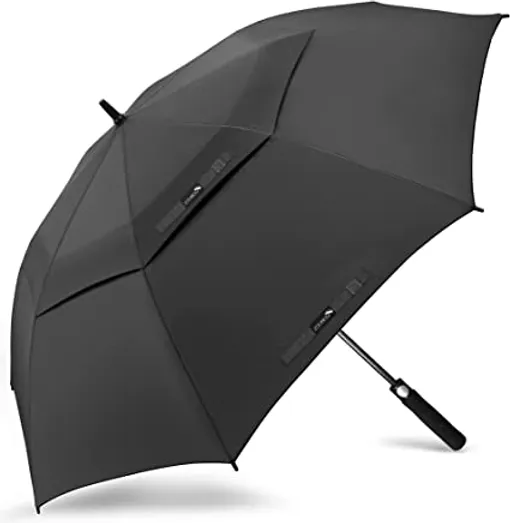
Get the look HERE
Additionally, it is important to always practice safe hiking habits, especially in the summer when the heat can take a toll on your body. Here are a few safety tips to keep in mind while hiking:
1.Plan ahead and research the trail you will be hiking.
Make sure you have a good understanding of the terrain, elevation, and distance of the trail you plan to hike. This will help you plan your gear and supplies accordingly and ensure you are physically prepared for the hike.
2.Check the weather forecast.
Summer weather can be unpredictable, especially in mountainous areas. Check the weather forecast before your hike and be prepared for changes in temperature, precipitation, and wind.
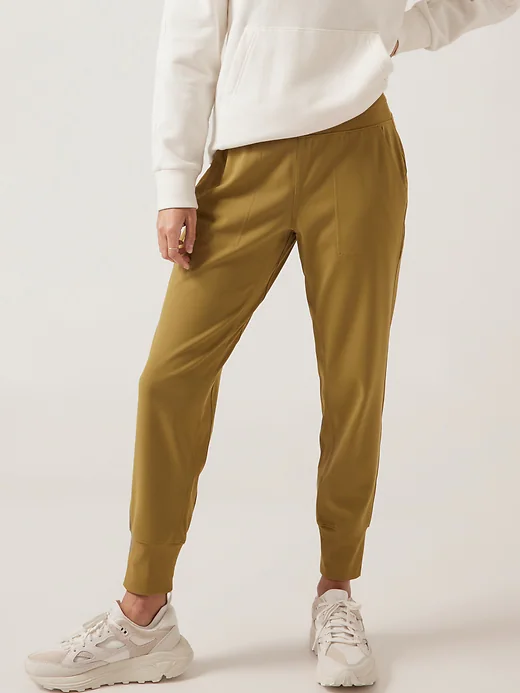
Get the look HERE
3.Stay hydrated.
As mentioned earlier, staying hydrated is crucial when hiking in the summer. Make sure to bring plenty of water and drink regularly throughout your hike. It’s also a good idea to bring an electrolyte replacement drink to replenish lost salts and minerals.
4.Take breaks and rest as needed.
It’s important to listen to your body and take breaks when needed. Rest in the shade or a cool spot to avoid overheating or dehydration.
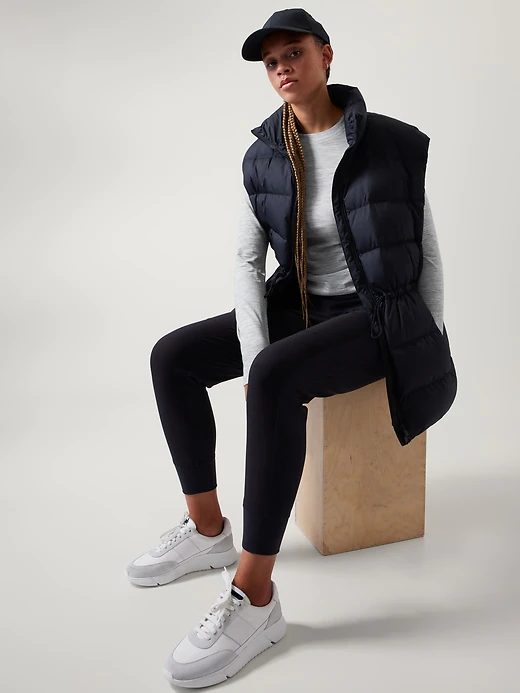
Get the look HERE
5.Wear sunscreen and reapply as needed.
Protect your skin from harmful UV rays by wearing sunscreen with a high SPF. Reapply every few hours or as directed on the product label.
6.Stay on the designated trail.
Stay on the designated trail to avoid getting lost or damaging fragile ecosystems. Hiking off-trail can also increase your risk of injury from loose rocks, steep drops, or other hazards.
7.Leave No Trace.
Practice Leave No Trace principles by packing out all your trash and leaving the environment as you found it. Respect wildlife and their habitats by observing from a safe distance and avoiding feeding or touching them.
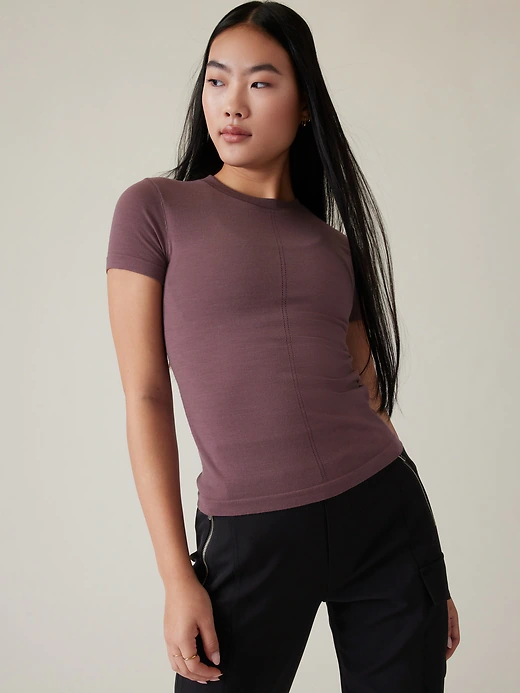 Get the look HERE
Get the look HERE
By following these safety tips and being prepared with the right gear and clothing, you can have a safe and enjoyable hiking experience in the summer. Remember to always respect the environment and stay mindful of your impact on the trail and wildlife.
Hiking in the summer requires careful consideration of what to wear and what gear to bring. Choose clothing that is lightweight, breathable, and provides protection from the sun and insects. Invest in comfortable and supportive footwear and bring a backpack and hydration system to carry your gear and supplies.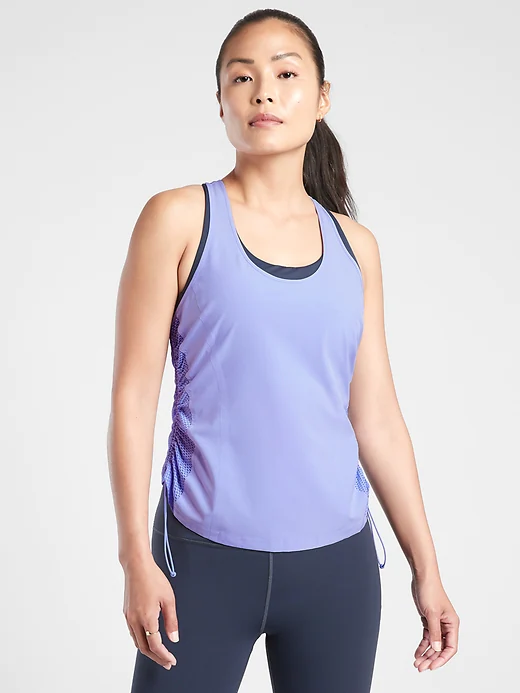 Get the look HERE
Get the look HERE
Remember to check the weather forecast and trail conditions, and practice Leave No Trace principles to minimize your impact on the environment. With the right gear and preparation, hiking in the summer can be a safe and enjoyable experience. Happy hiking!
Do check out my post: 8 Outfits to Wear to Play Paintballif you’re looking for some outfit ideas.
I also have a post titled What to Wear Today which offers a style guide for outfits you can wear every day of the week.
For some great ideas for what to wear skydiving, check out my post: 10 Outfits to Wear to go Skydiving..
Until the next post,
XOXO
Theankaraqueen
